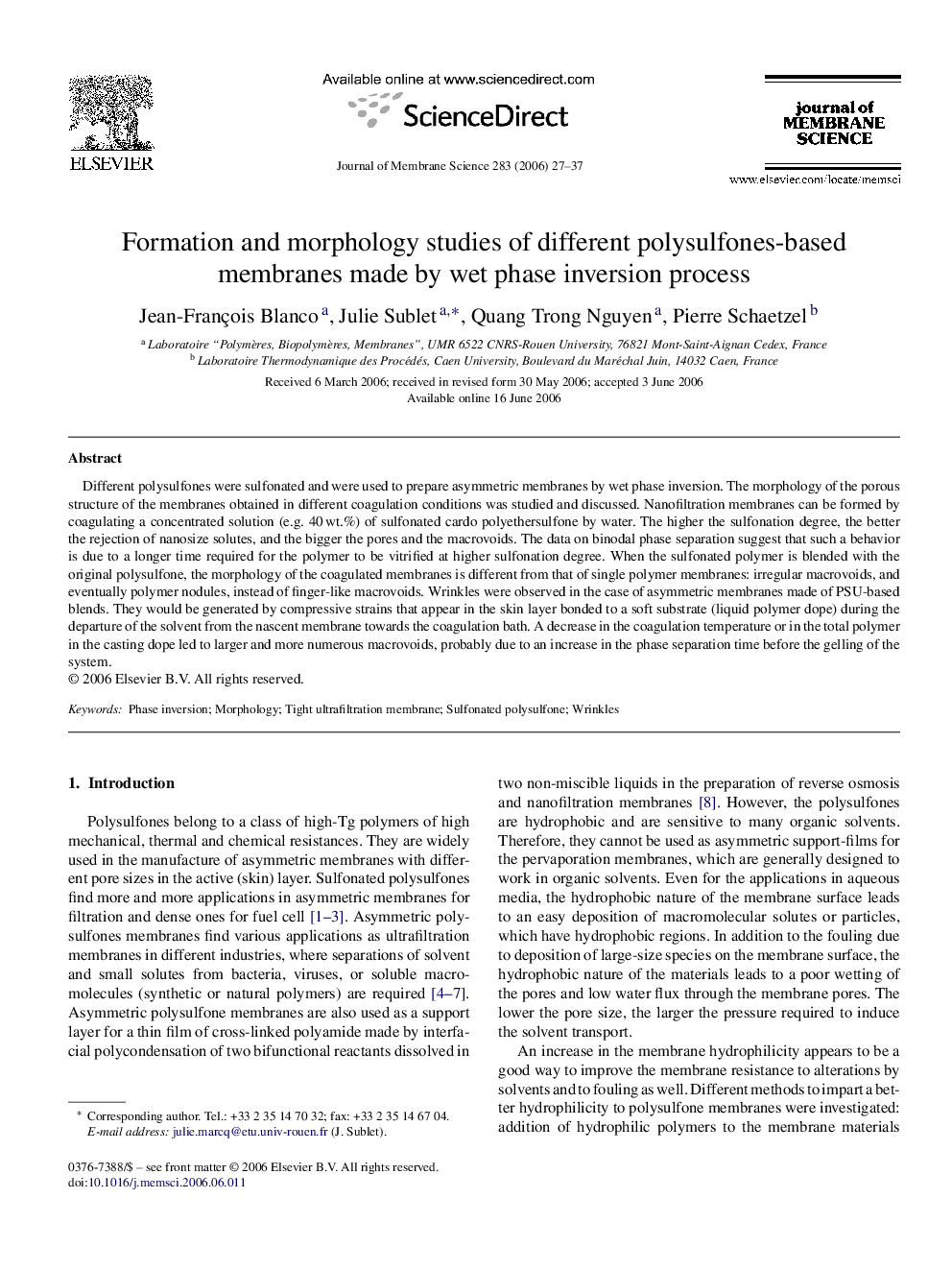| Article ID | Journal | Published Year | Pages | File Type |
|---|---|---|---|---|
| 639200 | Journal of Membrane Science | 2006 | 11 Pages |
Different polysulfones were sulfonated and were used to prepare asymmetric membranes by wet phase inversion. The morphology of the porous structure of the membranes obtained in different coagulation conditions was studied and discussed. Nanofiltration membranes can be formed by coagulating a concentrated solution (e.g. 40 wt.%) of sulfonated cardo polyethersulfone by water. The higher the sulfonation degree, the better the rejection of nanosize solutes, and the bigger the pores and the macrovoids. The data on binodal phase separation suggest that such a behavior is due to a longer time required for the polymer to be vitrified at higher sulfonation degree. When the sulfonated polymer is blended with the original polysulfone, the morphology of the coagulated membranes is different from that of single polymer membranes: irregular macrovoids, and eventually polymer nodules, instead of finger-like macrovoids. Wrinkles were observed in the case of asymmetric membranes made of PSU-based blends. They would be generated by compressive strains that appear in the skin layer bonded to a soft substrate (liquid polymer dope) during the departure of the solvent from the nascent membrane towards the coagulation bath. A decrease in the coagulation temperature or in the total polymer in the casting dope led to larger and more numerous macrovoids, probably due to an increase in the phase separation time before the gelling of the system.
